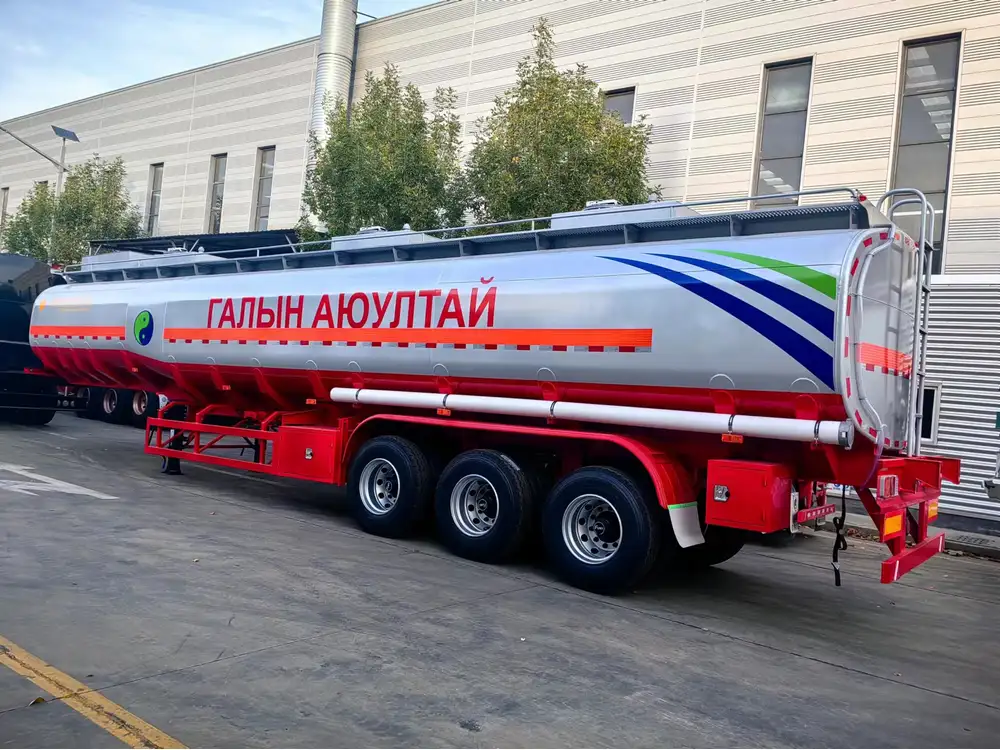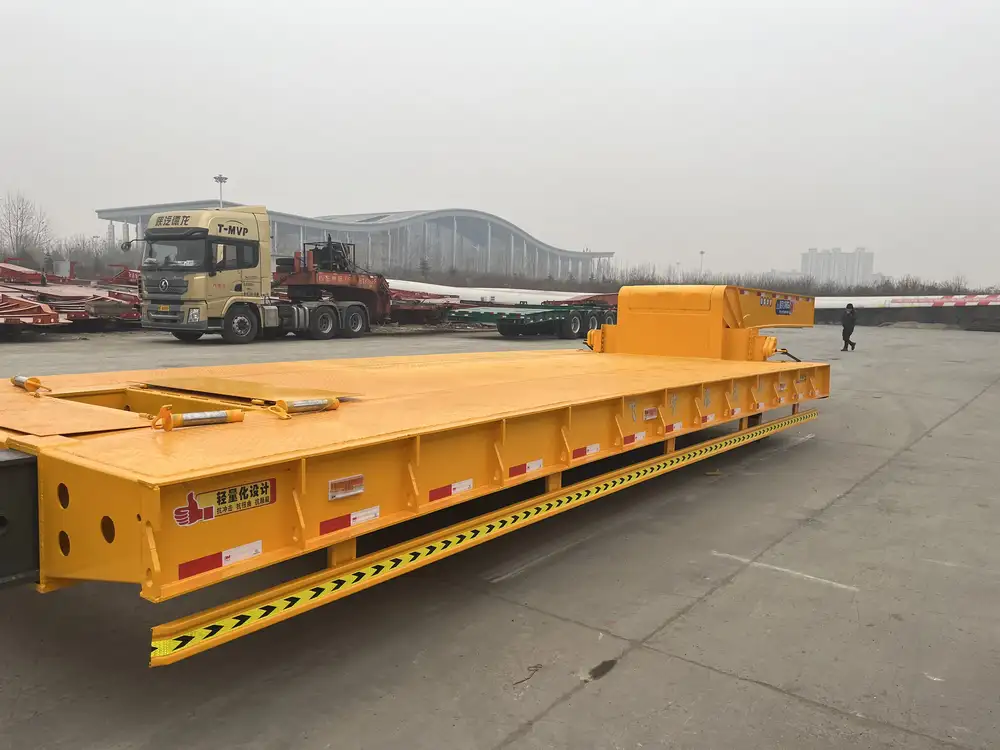When it comes to the world of logistics and transportation, the language we use plays a crucial role in effectively communicating concepts, designs, and functionalities. Among the various terminologies that professionals encounter, the term “semi tractor trailer” stands out. Let’s dive deep into understanding everything about this fascinating component of freight transportation—why it’s called a semi tractor trailer, its vital role within the logistics framework, and other essential details that manufacturers and operators must know.
The Anatomy of “Semi Tractor Trailer”
Breakdown of the Name: Semi, Tractor, and Trailer
To decode the name “semi tractor trailer,” we must first analyze its components:
| Term | Definition |
|---|---|
| Semi | Refers to the fact that the trailer is designed to carry a substantial load but does not have a front axle; instead, it relies on the tractor for support and movement. |
| Tractor | This is the front component that houses the engine and provides the power necessary to pull the trailer. It is also known as the prime mover. |
| Trailer | This is the rear part designed to transport cargo, commonly characterized by its varying sizes, capacities, and types. |

The Structural Elements
The semi tractor trailer consists of several key structural elements that contribute to its functionality. Understanding these can enhance one’s appreciation of its design:
- Fifth Wheel Coupling: This allows the tractor to connect and disconnect from the trailer easily, facilitating greater flexibility for loading and unloading.
- Kingpin: A critical component, the kingpin is a strong metal pin that secures the trailer to the fifth wheel.
- Chassis: This is the framework of the trailer that supports the weight of the cargo.
- Tires and Suspension: The performance and road-handling capabilities directly depend on these, and they play a significant role in operational safety and load distribution.
Why “Semi”?
The Origin of the Term
The term “semi” is derived from the Latin word “semi,” meaning half. In the context of the semi tractor trailer, this refers to the partially functional unit of the trailer. Unlike a traditional trailer that stands independently with its own axles, the semi trailer relies on the tractor for transportation. It is essentially ‘half’ of a complete vehicle since it requires a tractor for propulsion.

Additional Contextual Understanding
This designation reflects an essential design and engineering principle in the trucking industry where efficiency, load management, and maneuverability are prioritized. A semi trailer allows for larger cargo capacities due to its unique design—it can escort significantly heavier loads compared to conventional trailers, making it a popular choice among freight carriers.
The Role of Semi Tractor Trailers in Freight Transportation
A Pivotal Component of Logistics
- Cargo Capacity: The average semi trailer can handle up to 40 tons of weight, a crucial factor in logistics allowing businesses to transport large quantities of goods efficiently.
- Versatility in Design: Semi trailers come in various configurations—flatbeds, refrigerated units, and tankers, catering to diverse industries’ requirements.
- Cost Efficiency: These trailers offer an exceptional balance between payload and operational cost, making them economically favorable.

Enhancing Supply Chain Efficiency
In the world of logistics, efficiency can spell the difference between profit and loss. Semi tractor trailers significantly contribute to this by:
- Reducing Transit Times: With their substantial cargo capacities and speeds, they minimize the number of trips needed, thereby shortening delivery windows.
- Streamlining Operations: The easy coupling and decoupling capabilities enable swift transfers between different modes of transportation, such as rail or sea transport.
- Supporting Just-In-Time Deliveries: Their capacity to deliver large quantities at short notice allows manufacturers a way to reduce inventory costs and increase responsiveness.
The Importance of Regulations
Understanding DOT Standards
The Department of Transportation (DOT) imposes strict regulations on the design and operation of semi tractor trailers. Compliance with these standards is essential:
- Weight Limits: Regulations dictate the maximum allowable weight for operations, maintaining road safety and enhancing infrastructure longevity.
- Safety Equipment: Mandated safety tools such as anti-lock braking systems (ABS) and electronic stability control reduce the risk factors associated with large vehicles on the road.

Environmental Regulations
As concern grows regarding environmental impact, manufacturers face increasing scrutiny. Innovations in semi trailer technology focus on reducing emissions and enhancing fuel efficiency, essential for regulatory compliance and corporate responsibility.
The Future of Semi Tractor Trailers
Technological Advancements
The evolution of the semi tractor trailer is continuously advanced by innovations:
- Telematics Systems: These contribute to enhanced operational efficiency by tracking vehicle performance, route optimization, and maintenance scheduling.
- Electric and Hybrid Models: As the industry shifts towards sustainability, manufacturers are experimenting with electric semi tractors, promising significant reductions in fuel consumption and emissions.
- Autonomous Vehicles: The advent of self-driving technology could revolutionize logistics, potentially leading to lower labor costs and increased efficiency.

Industry Trends
- E-commerce Growth: The rise of online shopping rapidly accelerates demand for fast and effective logistics solutions. This has subsequently increased the usage of semi tractor trailers.
- Globalization: As businesses expand internationally, semi tractors will play an indispensable role in facilitating cross-border transportation of goods.
Challenges Facing the Industry
- Driver Shortage: A significant challenge, the trucking industry faces a persistent shortage of qualified drivers, necessitating improved retention strategies and working conditions.
- Regulatory Changes: The constant evolution of regulations, particularly regarding emissions and safety, obligates manufacturers and logistics companies to remain agile and compliant.
Conclusion: Embracing the Complexity of Semi Tractor Trailers
In understanding why it is called a semi tractor trailer, we unveil a perspective that extends beyond mere terminology. It is a recognition of the ingenuity embedded in freight transport’s backbone, reflecting a symbiotic relationship between the tractor and the trailer. As the logistics industry continues to evolve, one thing is clear: the semi tractor trailer will remain an essential component, adapting to meet the demands of modern freight transportation.
This journey through the complexities and intricacies of semi tractor trailers paints them not merely as components of logistics but as significant enablers of commerce. As manufacturers, operators, and stakeholders, the increased understanding should drive better decision-making, enhanced operational efficiency, and a continued commitment to innovation within this exciting industry.



